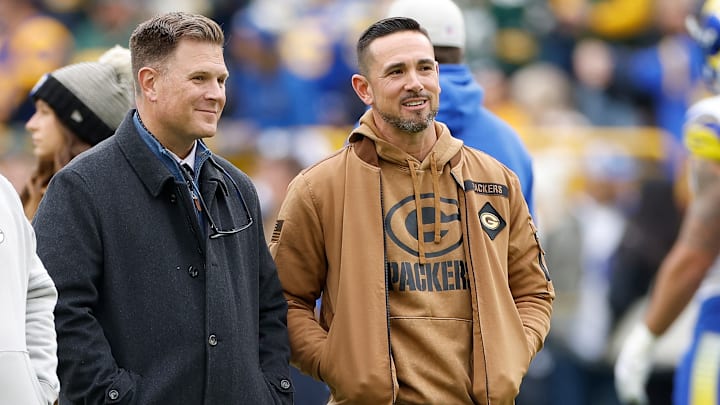With more financial flexibility, the Green Bay Packers were buyers during the opening week of free agency, but where do things stand entering the 2024 NFL Draft?
The Packers signed Xavier McKinney and Josh Jacobs in a frenetic opening day of free agency. Paired with the releases of Aaron Jones and David Bakhtiari, Packers fans experienced a wide range of emotions.
The moves also impacted the 2024 salary cap. Moving on from Jones and Bakhtiari cleared a little over $25 million in cap space, while McKinney and Jacobs account for $13.1 million on this year's cap.
What is Green Bay's cap situation entering the draft, and how much will its rookie class cost?
Packers have healthy salary cap entering 2024 NFL Draft
According to Over The Cap, the Packers have $21.7 million in cap space ahead of the 2024 NFL Draft, ranking 14th in the NFL.
It gives general manager Brian Gutekunst plenty of flexibility to add more free agents at areas of need after the draft. If Green Bay isn't comfortable with its depth along the offensive line or at linebacker once the draft is over, Gutekunst can comfortably add another free agent or two to fill the void.
The team still has other ways to create cap space. Releasing backup offensive lineman Royce Newman, who is entering the final year of his rookie deal, would save $3.12 million.
Green Bay needs cap space to sign its upcoming rookie class, and Jordan Love's massive extension is around the corner, but the Packers are in good shape entering the draft.
How much will Packers 2024 NFL Draft class cost on the salary cap?
The Packers are tied for the league lead in draft picks with 11, five of which are in the top 100. There's always the possibility of trades altering that, but as things stand, Green Bay's rookie class will be among the most expensive in the league. Over The Cap projects the Packers will need $3.92 million in cap space to sign their rookie class.
They estimate the class will cost $12.67 million, but the cap hits are significantly lower, as each new player is replacing someone already on the roster.
These numbers will change if the Packers make trades, especially if they were to swap current picks for draft capital in future years.
